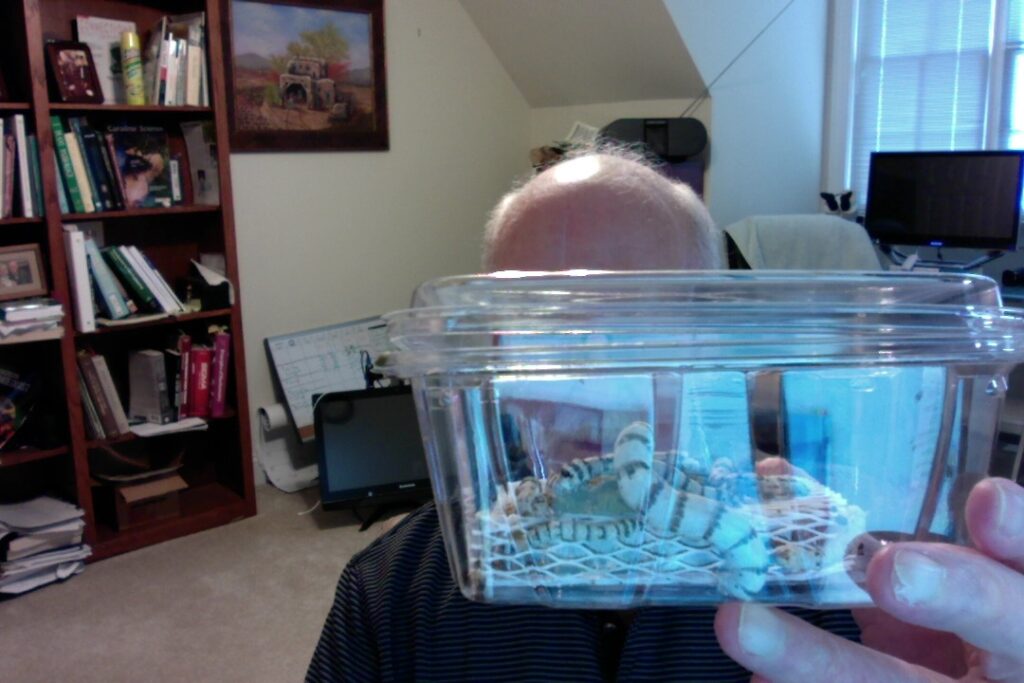While teaching my latest series of courses on insect rearing, using Zoom and Moodle, I have had some thoughts about the value of this teaching approach: online synchronous (= live) teaching. I am sharing some of these thoughts about insect rearing education.

I have been an educator for much of the past 55 years (I started teaching at Buena Park High School in California in 1965), and one of the most important lessons that I learned is that students who are actively involved in their education learn best. Several websites present information about the various ways people learn (for example: https://blog.prezi.com/the-four-different-types-of-learners-and-what-they-mean-to-your-presentations-infographic/). In that excellent website, Chelsi Nakano discusses these types of learning: Visual, Auditory, Reading/Writing, and Kinesthetic (learning by doing—actually physically performing the process that the student is trying to learn). She uses the acronym VARK to help us remember these “learning styles.” Dr./Ms. Nakano authored that blog in 2016, before the times of COVID-19, which makes the understanding of learning style all the more compelling for those of us who teach online courses!
Recognizing that optimal learning situations differ from person to person, and our population consists of these types of learners, dedicated educators must shape their educational approaches to these learning types. Besides the adjustment to the “VARK” learning styles, I have also learned that THE most important component of learning is the students’ motivation to learning, which translates to their involvement in their education process.
No matter how good the teaching resources are, the most important determinant of learning is each student’s commitment to learning. Along with commitment, there must be involvement in the learning process. As I try to convey the importance of heat transfer in diet processing, for example, I can talk about the process (auditory), show pictures of diet heating (visual), or ask students to go into the lab and make up diet (kinesthetic or learning by doing), the learning process is not effective unless the student has “bought into” learning about the heating process. Therefore, I try, as much as possible, to get students to anticipate outcomes, form hypotheses about the processes in question, answer questions about how factors such as heat transfer coefficients, mixing, temperature differentials, etc. influence the cooking process.
In the next few days, I will be posting specifics about how I try to reach the students’ minds and hearts to help motivate their involvement—all through a distance-learning medium such as Zoom and Moodle.
December 19, 2020
